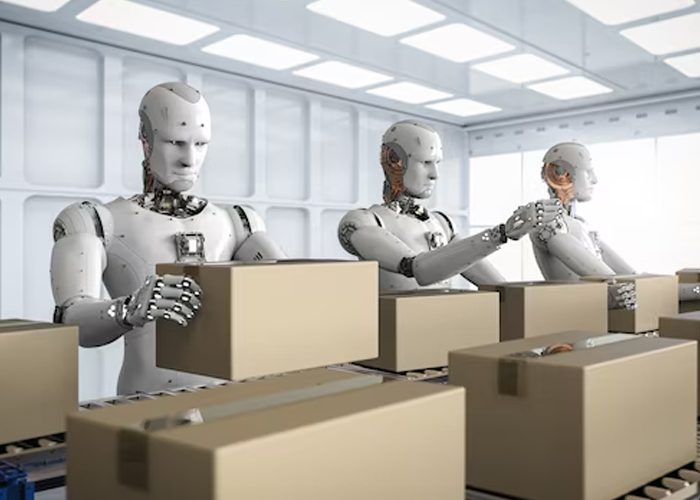
Transforming Indian manufacturing and harnessing the power of robotics for a competitive edge
In the fast-paced world of Indian manufacturing, the adoption of robotics has emerged as a transformative force, propelling the industry to new heights of efficiency and competitiveness. With technological advancements and the rise of Industry 4.0, robotics has become integral to manufacturing processes, redefining how products are made. Robots have revolutionized the sector from enhancing productivity and product quality to improving workplace safety. In this article, we delve into how the Indian manufacturing industry is leveraging robotics to gain a strategic edge in the global market and explore the prospects of this dynamic and exciting trend.
The Rise of Robotics in Indian Manufacturing
The integration of robotics in the Indian manufacturing sector has gained traction due to various factors, such as technological advancements, rising labor costs, and the need for increased precision and accuracy in production processes. With the advent of Industry 4.0, automation and artificial intelligence (AI) have become pivotal in reshaping traditional manufacturing practices.
Advantages of Robotics Adoption
1. Enhanced Productivity
Robots are designed to perform repetitive tasks quickly and precisely, increasing productivity levels. By automating mundane and time-consuming activities, manufacturers can divert their workforce towards more complex and creative roles, optimizing resource allocation.
2. Improved Quality and Consistency
Unlike human labor, robots maintain consistent performance levels without fatigue or distractions. This consistency leads to higher-quality outputs and reduced defects in manufactured products, which ultimately enhances customer satisfaction and brand reputation.
3. Cost Efficiency
While the initial investment in robotics may seem substantial, it proves cost-efficient in the long run. Robots can work round the clock without requiring breaks or vacations, leading to higher production rates and minimized operational costs.
4. Workplace Safety
Manufacturers can significantly reduce the risk of workplace accidents and injuries by assigning hazardous tasks to robots. This ensures a safer work environment and lowers insurance costs and potential legal liabilities.
Key Applications of Robotics in Indian Manufacturing
1. Assembly Line Automation
Robots are extensively used in assembly lines for precision and repeatability tasks. They can swiftly assemble components, weld, and accurately perform intricate operations.
2. Material Handling
Heavy lifting and material transportation can strain human workers, leading to productivity bottlenecks. Robotics in material handling streamlines warehouse operations and optimizes logistics, ensuring smoother supply chain management.
3. Quality Control and Inspection
Robots with sensors and vision systems are employed for quality control and inspection. They can detect defects, inconsistencies, and deviations in real-time, maintaining strict adherence to quality standards.
4. Packaging and Labeling
Automated robotic arms are utilized in packaging and labeling processes, ensuring precise and efficient packaging of products, which is crucial for maintaining product integrity and minimizing waste.
Challenges in Robotics Implementation
While robotics offers numerous benefits to the Indian manufacturing sector, its adoption also comes with certain challenges that need to be addressed:
1. High Initial Investment
Acquiring and implementing robotic systems requires significant capital investment, which may be a deterrent for small and medium-sized manufacturers.
2. Skilled Workforce
Operating and maintaining robotic systems necessitates specialized technical skills. Manufacturers must invest in workforce training or recruit skilled personnel to handle these technologies effectively.
3. Integration with Existing Systems
Integrating robotics into existing manufacturing processes can be complex and require modifications to ensure seamless compatibility.
Future Prospects of Robotics in Indian Manufacturing
The future of robotics in the Indian manufacturing sector looks promising, with several trends indicating rapid advancements:
1. Collaborative Robots (Cobots)
Cobots are designed to work alongside humans safely. They facilitate human-robot collaboration and enhance efficiency in tasks requiring human intelligence and robotic precision.
2. AI-Driven Robotics
Artificial intelligence is integrated into robotics to enable adaptive learning, problem-solving capabilities, and enhanced decision-making, making robots more versatile and efficient.
3. Remote Monitoring and Maintenance
Manufacturers are exploring remote monitoring and predictive maintenance for robots using AI and data analytics, reducing downtime and optimizing operational performance.
4. Customization and Flexibility
Modern robotics systems are becoming more flexible, allowing manufacturers to easily reprogram and reconfigure robots for different tasks, thus adapting to changing production demands.











